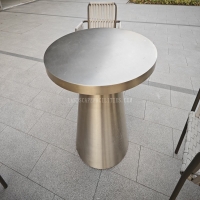Welcome to the website for landscape facilities products and knowledge.
How do landscape tables align with biophilic design principles to connect users with nature?
Biophilic design, a concept rooted in humanity's innate connection to nature, has gained traction in modern architecture and interior design. Landscape tables, as functional yet nature-inspired furniture pieces, perfectly embody these principles by blending organic forms, natural materials, and ecological harmony into everyday spaces.
These tables often incorporate elements like live-edge wood, stone accents, or even integrated planters, creating a tactile and visual link to the natural world. Their designs mimic organic patterns—flowing curves, irregular textures, and earthy color palettes—which subconsciously reduce stress and boost creativity according to biophilic research.
Beyond aesthetics, landscape tables encourage direct interaction with nature. Some feature built-in greenery or water elements, while others are strategically placed near natural light sources or outdoor views. This alignment with biophilic principles—prospect-refuge, natural complexity, and material connection—transforms workspaces or living areas into restorative environments.
Sustainability further strengthens this bond. Many landscape tables use reclaimed or locally sourced materials, minimizing environmental impact while telling a story of ecological stewardship. By merging functionality with nature-inspired design, these tables don’t just serve a purpose—they invite users to pause, reflect, and reconnect with the natural world in an increasingly urbanized life.
Related search:

Recommendation
Outdoor Metal Table - Classic Outdoor Furniture, Stainless Steel Table, Durable and Reliable